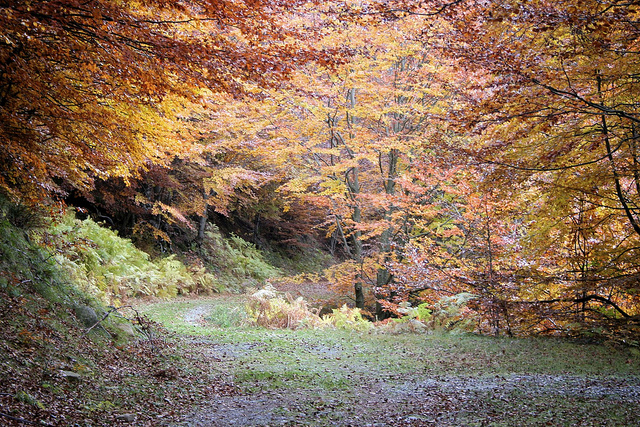
Autumn is just on the horizon and on some trees you can already spot the leaves starting to don their fall colors. With that in mind, the United States Forest Service is launching a campaign to get more Americans out in the forest to enjoy the beautiful sights, but even if you have been surrounded by trees your whole life, there is still lots you may not know about trees, forests and the economy.
Although fall is one of the most iconic seasons for forests, each season plays a vital role in the forest ecosystem. During the growing season in the spring and summer, leaves provide sugar for trees through photosynthesis. In the fall and winter, when trees are dormant and shed their leaves, a build-up of those sugars sustains the tree, said Harris Sherman, under secretary for Natural Resources of Environment and oversight of the U.S. Forest Service.
“When the leaves fall to the ground, they basically supplement the soils, they become nutrients that help to rejuvenate the soils, they help to retain moisture on the ground, they provide food for organisms in the ground,” Sherman explained.
This cycle is something most people have known since elementary school, but Sherman goes further to describe the value of a forest to a community.
“Some people will think very narrowly of it as in ‘the value of a forest is to provide wood for housing, or pulp, or paper, or what have you.’ But forests… provide a wide number of benefits to society,” he said. Sherman added that some of the important properties of forests were:
- Forests are where water is stored and water is cleansed. Sixty-six million Americans get their drinking water from just the national forest.
- Forests provide habitat for wildlife. In national forests, there are approximately 550 threatened endangered species whose principal habitat is in the national forests.
- Forests sequester – everyday – about 11 to 12 percent of the carbon dioxide that is produced in the United States by cars and power plants and other fossil fuel generation.
- Forests provide wood and fiber.
- Forests provide recreation: the national forests alone provide recreation activities and opportunities for 173 million Americans.
“When you think about a tree and the leaves on a tree and how that allows a tree to grow, and then what comes from that in terms of creating a forest and all the ecosystem services that come from that forest, these are really a vital part of the environmental fabric that we have today,” Sherman concluded.
Sherman says that money from tourism to see the change in leaves greatly impacts local communities. Estimates are that $8 billion dollars goes into the northeast for fall visitation, while a study in Michigan showed the fall tourist season was a $300 million economic opportunity for local communities.
The science behind leaf coloration
 Kevin T. Smith, U.S. Forest Service project leader and plant physiologist for the Northern Research Station, discussed why trees lose their leaves come fall and the science behind the coloration of those leaves.
Kevin T. Smith, U.S. Forest Service project leader and plant physiologist for the Northern Research Station, discussed why trees lose their leaves come fall and the science behind the coloration of those leaves.
Leaves begin the process of preparing to shed from the tree when the tree stops making chlorophyll, which is a green pigment. “Chlorophyll breaks down and other pigments that are present in the leaves, the yellows and the oranges… those pigments then become visible,” Smith said. “In the growing season, those pigments are present, but they are doing other functions, energy capture and other kind of ‘sensing’ functions.”
Meaning that the color that you see in the fall is always present in the tree, at least when it comes to yellows and oranges, Smith said. Oak leaves often become brownish. Red and purple-red pigments, however, are formed new in the fall. “What favors that production are warm days and cold nights,” Smith said. “It’s that cool night and warm day that favors a production of red pigment that you see in red maples, sugar maples and a few other groups of trees as well and that is the antioxidant.”
To get out an experience these fall colors yourself, visit the Forest Service’s website at www.fs.fed.us where you will find information on the best time to predict peak color conditions, suggested driving routes and foot trails and more. At least 250 million Americans live within 100 miles of a national forest and the website can lead you to one nearby. On the website is a hotline (1-800-354-4595) that you can call to key in specific geographic regions in the United States to get current information on exactly where the change in color process is.
Image from sponselli on the flickr Creative Commons Image from fredo (findfado) on the flickr Creative Commons

 Your Privacy Choices
Your Privacy Choices
 The
The